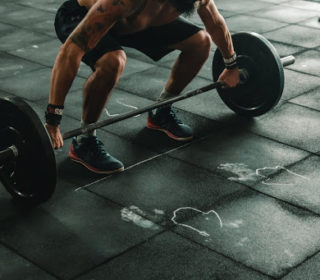With the growing competition in the industry and the declining job trends, students are under tremendous pressure to perform well in academics. Unfortunately, we have created an environment that rewards students on their ability to learn, rather than their ability to think and create.
When kids are required to sit through long lessons, they become more vulnerable to exhaustion or even depression. Rather than find ways to overcome depression and stay cheerful, issues like laziness and anxiety disorders are increasing among students..depression
Because of such lengthy and overwhelming sessions that students are required to put up with, it is not uncommon to find students seeking professional custom writers to help them in essay writing to take at least some pressure from their already tedious lifestyle.
Research says that workouts can actually help students overcome depression. However, does engaging in physical and fitness activities help academic performance?
Contents
Impact of Physical Activity on Academic Performance
According to research, learners need enough engagement in fitness activities throughout their school year. In addition to preventing students from developing obesity complications, fitness also aids students to perform extraordinarily well in their academics.
Many experts have published studies that support the significance of physical fitness activities in educational institutions. Researchers cite that physical fitness activities have a significant positive effect on the growth process of the cognitive faculty of the learners’ brains. This, in turn, affects their general behavioural tendencies.
All these aspects of development are crucial mechanisms for achieving spectacular achievement in academics. Additionally, fitness activities lead to better concentration and focus during lessons.
Unfortunately, numerous educational institutions have eradicated physical fitness sessions from their curricula either out of ignorance or negligence of the significance of fitness to the learners’ wellbeing and achievement in academics.
Fitness Is Crucial in the Improvement of Leaner’s Social and Educational Skills
Physical fitness has a direct and positive correlation with the development and behavioural tendencies of the human brain. Body fitness and physical activities have the following impacts on the learners’ brain executive operations:
- Enhanced oxygen flow to the brain.
- Better and improved brain neurotransmitters.
- Improved neurotrophins that support the differentiation and survival of neurons in young people’s brains.
- With neurotrophins, neuron survival is made possible within the faculties of the brain responsible for memorisation, the learning process, and critical thinking.
More Benefits of Physical Fitness Activities
Engaging in physical fitness activities has many more benefits beyond just the improvement of the learners’ scholastic performance. Experts cite that existent empirical evidence can point to the correlation between physical fitness activities and issues such as rates of dropping out, truancy, and social integration.
Research findings further show that rates of drop-outs were much lesser among students who actively took part in physical fitness activities. Nonetheless, researchers warn that obliging learners to participate in fitness activities may not necessarily be the solution to the problem of the high prevalence of dropping out by students.
Responses to Research Findings on the Significance of Physical Fitness Activities
So, what measures can educational institutions and the relevant stakeholders take to increase participation in physical activities among learners?
The first step towards realizing improved engagement in physical fitness activities and thus improved performance among students is: school administrators need to change their mentality about physical fitness activities. Most administrators mistakenly think that physical education activities should take a backseat.
Relegating physical fitness activities to the backseat cannot be proved to be effective in improving students’ scores in standardised tests or overall academic performance. In actual fact, research proves the converse. With increased engagement in physical fitness activities and other varsity interscholastic programs, students seem to perform better in their academics.
Research evidence makes it clear. Physical fitness activities and programs must have a place in every educational institution’s learning curriculum for improved academic results. Experts recommend about an hour of physical fitness activities every day for prepubescent kids and teenagers. For kids in elementary school, educational institutions should allocate two and a half hours of physical fitness engagement. Three hours and forty-five minutes should be enough for kids in high school and middle school each week over the entire school year.
With enough participation in physical activities and well-curated programs, it is extremely easy for educators to steer their students towards improving their performance while creating bodies that are fit and minds that are ready to learn.






Comments are off this post!